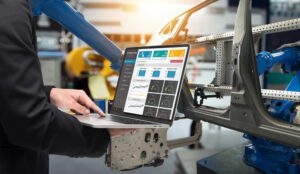Automotive manufacturing and retailing have changed dramatically over the last 5-10 years. Technology is advancing at a break-neck pace. Self-driving cars, electric vehicles, and changing mobility habits are paving the way to the new future of automotive manufacturing. Here’s a look at 7 of the most exciting new trends in automotive manufacturing and retailing.
- Self-Driving Cars – The technology behind self-driving cars has existed for many years now, but the public has taken years to assimilate to the concept of riding in a vehicle controlled by a machine. “Gateway” features such as adaptive cruise control and auto-parking, have gradually opened the door for more advanced auto driving features and allowed tech companies like Uber to start testing fully autonomous vehicles.
- Electric Vehicles – Tesla has moved the needle forward in terms of electric capability. Battery technology has steadily improved in recent years resulting in longer range and faster charging. While electric vehicle production has been limited to small passenger vehicles so far, electric-powered pickups and even semi-trucks are not far down the road in the coming years.
- On Demand Connectivity – With the introduction of 5G wireless connectivity comes a wealth of opportunity in the connected vehicle ecosystem. From powertrains and advanced driver assistance systems to connected services and smart interiors, cars are becoming more connected both to each other and the surrounding environment. This means that finding a parking spot, avoiding a collision, navigating a traffic jam, or ordering food on the run will become even easier.

- Subscription Vehicle Ownership – In much the same way that computer software (such as Microsoft 365) has shifted to a subscription model, vehicle ownership is headed in that same direction. The rising generations have demonstrated less desire to own things and more proclivity toward paying for use of things like vehicles. Ride sharing services like Uber and Lyft are part of this trend, but vehicle ownership is not far behind. 2017 saw several automotive manufacturers announce and launch subscription services, including Book by Cadillac, Porsche Passport, Care by Volvo and Canvas (backed by Ford Motor Company). This particular trend could have the single biggest impact on automotive retailing of all trends highlighted in this article.
- 3D Printing of Car Components – According to GM, automakers have been using 3D printers to fabricate prototypes for vehicle development. The process is cheaper and more efficient that traditional methods. The company speculated that the use of shape-shifting transformable 4D-printed materials would follow next.
- Disappearance of Manual Transmissions – Advances in the fuel efficiency and performance of automatic transmissions have all but eliminated demand for stick-shift cars. Paddle shifters seem to have served as a bridge for those accustomed to manual shifting, but according to a 2017 report, GM said that 62% of drivers used their paddle shifters less than two times per year.
- Use of Light Weight and Nano Materials – With rising fuel efficiency and emission standards, manufacturers are forced to explore new light-weight materials for productions. Examples of weight-reduction technologies include the increased use of aluminum in drivetrain and body components, carbon-fiber body panel, and carbon-nano composite underbody components.








